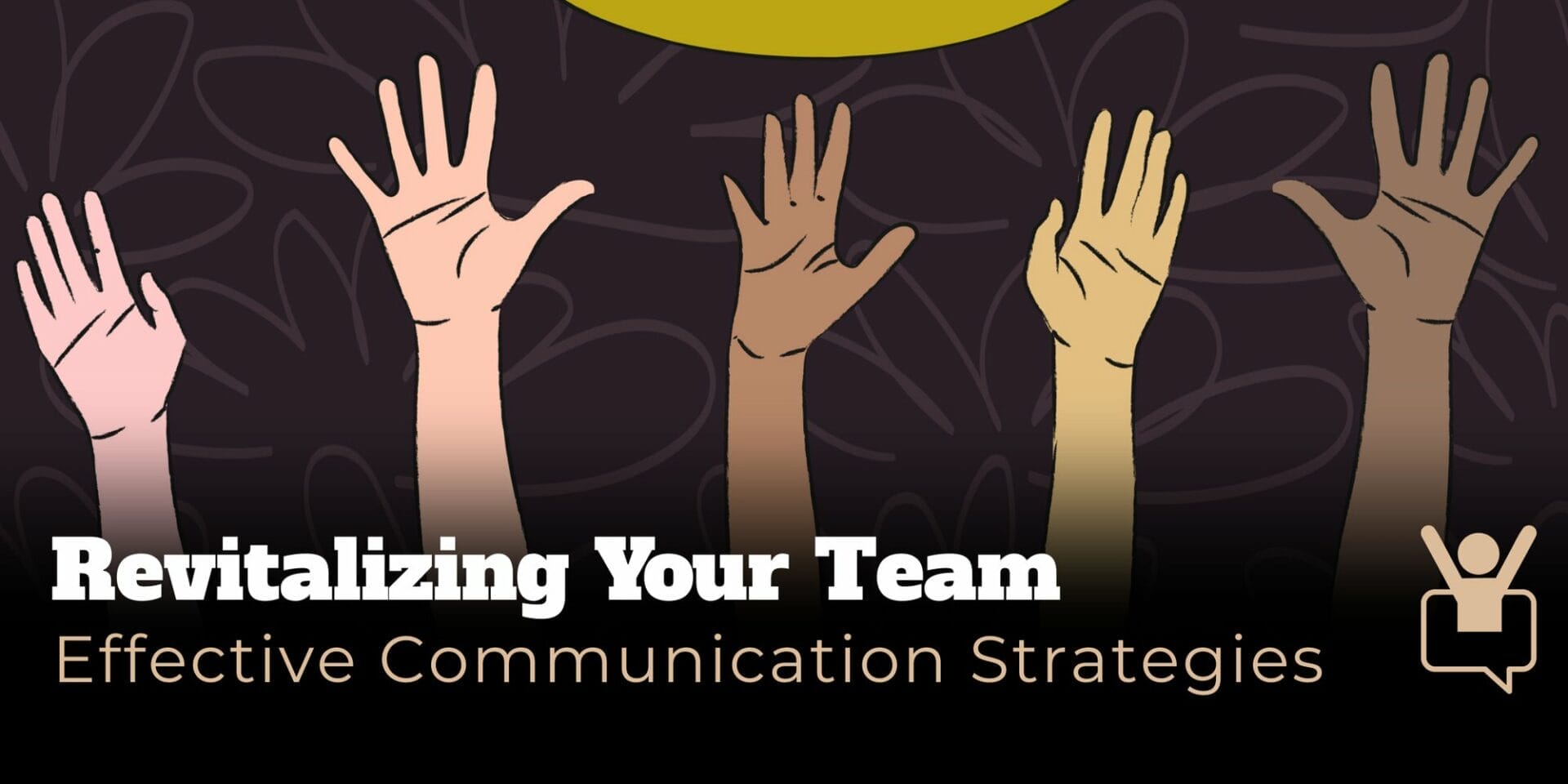
Revitalizing Your Team: Effective Communication Strategies
By Steven Lozada | December 29, 2023
By Steven Lozada | December 29, 2023 | Communication Skills, Team Building, Team Coaching
Don't Give Up On Your Team Yet
We've all been there before with the entire team: Sitting in yet another pointless meeting, zoning out while someone drones on about metrics that don't matter to you. Or how about people spitballing theories that have no bearing on getting stuff done on the project. How about getting copied on a lengthy email thread, again, that has long since gone off the rails from the original topic, and the "cc" list is longer than the email body text? These sorts of anti-communication patterns are too common in organizations and seriously diminish team effectiveness and employee engagement.
What This Costs The Organization
- Employee satisfaction plummets
- Team efforts dissipate
- Employee turnover soars
- Employee feedback disappears
- Internal communication devolves into gossip
- Employee burnout becomes a trend
This is happening, even on broken teams and on "successful teams" of smart and talented professionals. They struggle to collaborate effectively. The unofficial company culture includes meetings that run too long and lack clear objectives or outcomes. Email threads are a bit chaotic, with numerous replies, cc's, and loss of focus. It appears that there's a lot of work happening, but there is poor synchronization and more excuses than results.
Here's What You Can Do
As an expert in organizational communication, I would strongly advise scheduling a half-day team retreat away from the usual workplace. This provides an opportunity for an open and honest discussion about current poor communication practices, pain points in team dynamics, and desired improvements to avoid becoming a dysfunctional team.
As the team leader (and even as an individual team member), come prepared with clear goals to arrive at a common goal - this is not just a gripe session but a focused effort to diagnose issues and identify solutions. Ask team members to voice their pet peeves when it comes to communication within the team.
Anticipate What May Happen
The team leader should anticipate common concerns, which often include:
- Excessive and wandering meetings that feel like a waste of time
- Important information getting buried in long email chains
- Lack of clarity around when to communicate something via email vs. chat tool vs. verbal conversation
- Silos between team members preventing smooth collaboration
- Repeated questions indicating knowledge gaps
Allow people to provide candid feedback on what communication methods, forums, and norms are working versus those leading to frustration. Identify specific needs for different types of information to flow more freely without duplication of efforts.
Watch Out For This
Don't just surface problems, though; flip each expressed concern into a potential solution. For every communication pain point, ask the team - how can we do this better? Challenge them to reimagine existing norms. You want everyone to contribute to becoming a collaborative team.
Often small changes to communication ground rules and channels can vastly improve collaboration on team goals, productivity, and job satisfaction. But it starts with being honest about what's not working and then getting creative about how it could.
Create a Psychological Safety
1. Invite your team members to be vulnerable and open with each other. Make a commitment to one another to avoid blame or criticism and focus on constructive feedback.
2. Set clear expectations for communication, including when it's appropriate to use email, messaging apps, or video-conferencing tools.
3. Encourage team members to engage in active listening for effective communication during meetings and conversations and provide specific feedback when necessary.
4. Establish ground rules around topics like politeness, respect, and openness as part of the team's culture.
5. Make sure everyone has access to information they need by curating a knowledge base with helpful resources and documents that can easily be accessed by all team members in one central location.
6. Implement short stand-up meetings each morning for quick status updates that focus on what’s happening in the immediate term rather than long-term plans or projects.
7. Allow ample time for collaboration between team members so they build a strong sense of camaraderie, and work together effectively towards the same goal without feeling rushed or overwhelmed by the task at hand
Conclusion
This is just one example of how rethinking communication practices can have cascading positive effects. By auditing what's working well and what's leading to friction, then establishing some clear ground rules aligned with needs, collaboration, productivity, and job satisfaction soars.
It may seem like a small thing, but getting team communication firing on all cylinders is a huge lever for team performance.
So take a page from this playbook. Schedule some time to have an honest conversation about your team's habits.
READ THIS NEXT
INTERESTED IN CONSULTING US FOR YOUR PERSONAL DEVELOPMENT OR FOR YOUR BUSINESS?
You are only one conversation away from removing the barriers that are blocking the path towards your best achievements.


